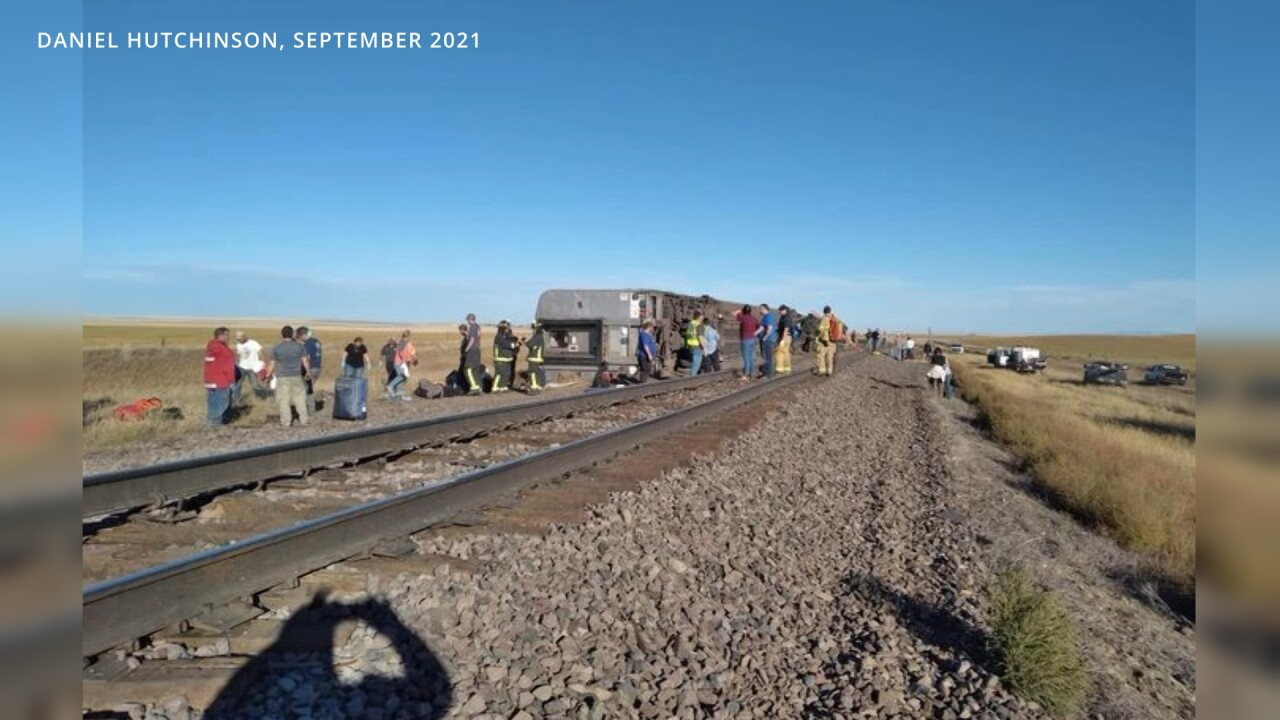BILLINGS — Next month will mark two years since an Amtrak derailment on Montana's Hi-Line killed three people and sent nearly 50 more to the hospital. Just last week, the National Transportation Safety Board (NTSB) released its investigation findings.
Now, one of the lawyers representing victims in a lawsuit believes both BNSF and Amtrak should be held responsible.
The derailment occurred on the afternoon of Sept. 25, 2021. Ever since, it's left many worried about the condition of Montana’s rail lines, even more so after the NTSB’s investigation pointed to track conditions as the main culprit.

“The train tipped about 45 degrees. I thought it would stop, but it takes a while for it to stop, and then it continued to go all the way down," said Wayne Freed, a survivor of the derailment, in a September 2021 interview. "At that point, I just held on to (a coffee table), and my legs were dangling down below. The windows broke out down below, which is how we eventually escaped after the train stopped."

It was devastation as far as the eye could see.
"I’d hate to think what would happen if I hadn’t been able to hold onto my table,” Freed said.
Now some answers as to how it happened.
“The investigation started immediately after the derailment on Sept. 25, 2021," said Zach Zagata, the lead investigator in the investigation and a Billings resident, on Tuesday. "NSTB launched an 8-member 'Go Team' consisting of experts in mechanical operations, track and structure, crashworthiness and survival factors, emergency response, and human performance."
Zagata says after a lengthy process, major questions were answered.
“During the course of the investigation, investigators gathered and analyzed over 3,000 pages of factual information,” Zagata said.
That information pointed to a combination of worn rail, vertical track deflection, sub-grade instability, and misaligned track.

Something one of the lawyers representing victims in a lawsuit, Kristofer Riddle, said was obvious.
“We represent a number of the victims of the Amtrak derailment just outside of Joplin, Montana... September of 2021. The lawsuits are focused against Amtrak and BNSF,” Riddle said on Friday. “I think from the beginning this has been understood as a failure to properly maintain this particular stretch of tracks.”
Riddle works for Clifford Law Offices in Chicago, which was the train's starting point. He believes both Amtrak and BNSF are at fault.
“The defendants, Amtrak and BNSF, they’ve already admitted liability for the derailment because of the facts that were revealed in the NTSB report that just came out,” Riddle said. “There’s an area where you’re literally able to see a horizontal misalignment of the tracks."

According to Riddle, the survivors have long-lasting impacts.
"It’s something (the survivors are) going to have to live with for the rest of their lives,” Riddle said. “What binds (them) all is a long-term psychological and physical impact that takes on the victim's minds and bodies. There are profound, long-lasting, emotional impacts."

MTN News reached out to BNSF and Amtrak and requested an interview. The organizations declined but did provide written responses.
Amtrak’s statement reads: “Amtrak appreciates the opportunity to participate in the investigation and we will review the recommendations. Amtrak will continue to work with all stakeholders to improve rail safety for the traveling public.”
BNSF’s statement reads in part: "...BNSF inspections meet all federal requirements, and we are committed to timely maintenance, repair and replacement whenever issues or potential issues are detected..."
A BNSF spokesperson also explained that even before the report was released, the company had plans to replace 346 miles of rail and approximately 2.8 million rail ties this year.

While the legal battle continues, Riddle wants to thank the heroes on behalf of his clients.
“The community out in Joplin really kind of, no pun intended, came to the rescue of the individuals here," Riddle said. "They were on the scene with remarkable service, and they were out there helping all these people."
To read more about NTSB's findings, click here.



